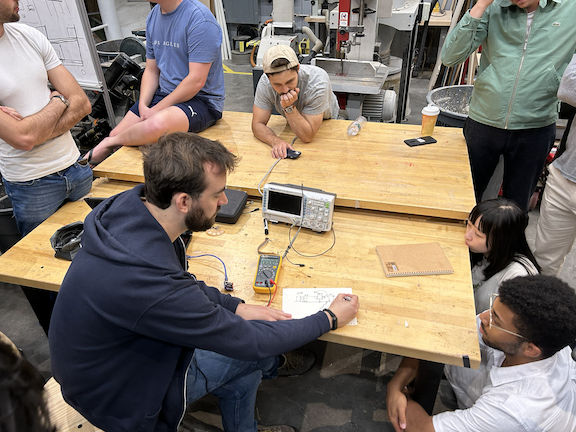In one sentence: I'd like to make PCBs a focal point of my final project, but I have to learn more about the components to make it work.
Reflection: Spending more time on this earlier in the week gave me more time to think creatively about how I could use EDA.





Quentin and Diana were patient teachers. Quentin assured us that it would be very difficult to electrocute ourselves, and was quick to turn to alternative means of instruction (pen and paper) when he could tell we needed more basic instruction on the components of a PCB. Diana gave us a demo on the arch shop multimeter and a Cold War era oscilloscope, and her project of the drone made out of a PCB helped inspire my idea of a geodesic globe made out of PCBs.
"Below 20V, very chill." - Quentin
Topics discussed
Multimeters can be used to:


I gravitated towards SVG PCB based on what I wanted to make for my final project. Some reflection on this helped me think about how PCBs could be integrated. I want to put a globe at the center of my project, and help from Leo re: 3D PCBs got me thinking: what if I used a bunch of PCBs to make a 3D object? So I looked up the geometry for geodesic globes, and it doesn't seem impossible: I could make a globe out of 80 facets, which would be some proportion of equilateral and isosceles triangles. This may be a lot of triangles, but as a wise woman once told me:
"When eating an elephant, you go one bite at a time" - Erica Brown, Barnstable High School Chemistry teacher
SVC PCB was perfect for this task:
Next steps: